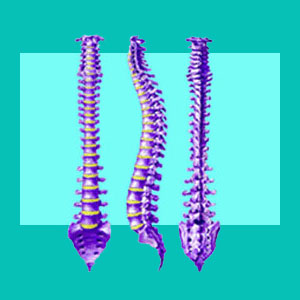
Traction for herniated discs is a perfect example of real old school medicine. Traction in its traditional form is rarely used anymore, at least not in developed countries, since it has proven itself to be illogical and ineffective for most back pain complaints.
I know that some of you have endured long periods of traction in the past, and maybe even more recently, especially if you live in countries with less enlightened healthcare systems. Your letters and stories have really hammered home just how useless traction is and how it can certainly do far more harm than good in most instances, especially when modern spinal decompression is becoming more and more available.
This critical essay examines the current and past history of using spinal traction to treat herniated disc complaints.
Traction for Herniated Discs Information
When I am talking about traction, I am referring to the old form of keeping a patient confined to bed and using a complicated apparatus of weights and pulleys to try and separate the spinal bones from one another. I am not referring to the newer forms of spinal decompression therapy popularized by the DRX9000, Vax-D and AccuSpina systems.
Old school traction could not possibly accomplish its goal of spinal decompression with the weights used. It is anatomically impossible. However, what it does accomplish is to further reduce the functionality of the individual, facilitate muscular atrophy and generally make patients require complete rehabilitation to do even the most basic physical tasks once they were released from their bedridden prisons. Traction is certainly more akin to a medieval torture than any enlightened medical treatment.
Traction Therapy for Bulging Discs
Traction used to be prescribed for a full range of back pain complaints, including those linked to herniated discs, osteoarthritis, muscular pain and general back injury. If it involved back pain, traction was the way to go for decades. While this treatment continued for many years, it never proved itself to be effective at all and only weakened the patient considerably.
My own mother faced bedridden traction for an extended time frame prior to her eventual laminectomy for a lumbar herniated disc before my birth. Neither the traction, nor the surgery, helped her at all and she had back pain her entire life.
Finally, doctors realized that patients should try moving around as soon as possible after injury, in order to facilitate an active healing response and preserve mobility and function. It is amazing how almost overnight, physicians completely reversed their treatment prescription for patients who would have traditionally been advised bedridden traction. However, this should be no shock as medicine has never been consistent for long, especially when so many herniated disc treatments make things worse instead of better. Healthcare is a revisionist science.
Additionally, traction kept a patient in the hospital unnecessarily, and as space began to get even more precious and competition for beds increased, doctors really had no choice but to discontinue the practice in most instances. Once again, the economics of healthcare dictate current practices more than efficacy or logic.
Is Traction Indicated for Herniated Discs?
Traction is still a popular treatment in parts of the developing world. I guess it will take some time for the knowledge of the complete ridiculousness of this approach to reach the far corners of the globe, even though traction has not been actively used in the US for decades.
To the many patients in these countries who write to me, I am so sorry for your having to endure this torture. Try to get through it the best you can. If your doctor gives you a choice in the matter, do yourself a favor and research spinal traction before agreeing to it. You are sure to see that it is an antiquated and inappropriate treatment for virtually every back and neck pain condition.
Herniated Disc > Herniated Disc Treatments > Traction for Herniated Discs





